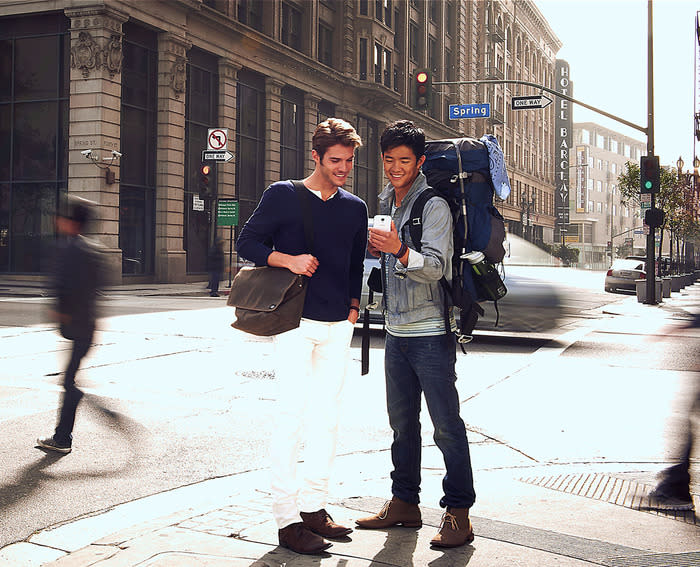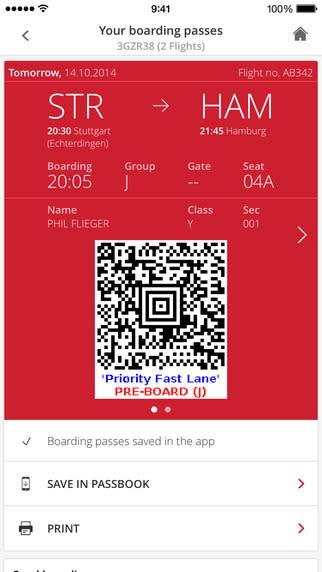Easy tips for digital travelers
When traveling, people tend to use ‘traditional’ methods. Traditional means that what we do is the same as what we did years before.
With the rapid growth of technology and infrastructure in the travel industry, there are things that have changed — usually benefiting us with safer and more practical ways to travel.
One simple example is how technology has made us more paperless. This is not only great for the environment, but also saves us from rummaging through our bags just to find an itinerary or booking number.
To give you a better idea about these elements of modern travel, here are some tips that you can consider practicing.
Optimize your smart gadgets
Did you know that most airports and airlines accept online check-in? If you do, you might want to take that option instead of lining up in a queue just to check in at the airport, especially if you don’t need to check in your luggage.
And also it has become commonplace to have your flight ticket or hotel booking sent to your email, complete with a barcode. Before you print that page, notice that there is usually fine print at the bottom that says, “Please consider the environment before printing this page”.
If you follow that suggestion, you just need to show the booking confirmation at the check-in desk at the airport, or give staff the booking number.
There are also cell-phone applications that can retrieve your booking information (flight, car rental, hotel accommodation, etc) and simulate the same barcode or quick-response code so that you can put your phone screen on the scanner and you are good to go.
Digitize everything
If you think that the appearance of online mapping solutions such as Google Maps is a breakthrough, wait until you find out what you can do with a phone that is equipped with a camera.
When traveling, it’s hard not to go shopping, whether at the duty free shop at the airport, or at local gift shops. And often you are so happy that you tend to throw the receipts in the bin.
But if you are a strict traveler, you will always want to know how much you spent in a day. The good news is, there are apps that are able to scan (take a picture) and read your receipt, then put the information in an expenses table.
Even though you purchase something using your credit card, so the transaction will appear on your billing statement — you will need to wait until you’re home before you can see the information. Besides that, the information is for the whole purchase rather than separate items, and you will not know how much you paid for the t-shirts and how much for the snow globe. It’s good for future reference and as a proof of purchase.
Other things that you should consider “digitizing” are your passport and national identification card. But for these two, bear in mind that you should put them in a secure folder. Or if you prefer, upload them to your favorite online/cloud storage service such as Google Drive or Dropbox. While this will not act as an official replacement for your real passport or ID card, it could be useful to prove that you are of a drinking age when ordering drinks in some countries.
You won’t need a scanner to do this, just take pictures with your smartphone. A scanned image does indeed look better, but a picture of it will show the actual physical condition and become more solid proof.
Just make sure that the picture is well-framed and in focus so you can read any numbers. There’s no need to take a very close picture, because even with a 5-megapixel camera, you can always zoom in to get a better view.
Use travel safety accessories
My parents used to tell me to always spread my money around and not put it in one place. This advice usually ended up forcing me to hide some money in my socks or, for some people, hide it in their underwear.
While it might seems like a great idea, it wasn’t practical at all. Instead, why don’t you try using hidden compartments in your bag or jacket, and put the money there instead.
There are also specific bags that strap to your body so your valuable things will be more discreet. And no, not fanny packs. Those will only make you more of a target for thieves because, you know, you are wearing a fanny pack in 2015.
Other things to look for are small nifty gadgets like bag trackers. These usually use Bluetooth technology and can be paired to your smart devices. While the main purpose is to find your bag or tell you when it goes out of range, you can also use it when waiting for your luggage to arrive at the baggage claim area of the airport. There’s no need to squint whenever you see similar baggage to yours arriving at the conveyor belt.
Share your location history
This might seems like a bad idea, but it is actually a great way to protect yourself or your loved ones when traveling in a foreign country. No, I don’t mean to urge you to update your social networks frequently while traveling, but instead, share the information with those you really trust.
An easy way is by sending texts or instant messages containing your destination wherever you go. Telling your friends or family what flight number you’re on or the door number of the taxi you take is very easy to do, but often forgotten when you are admiring the sights or crowds around you.
Or if you have a smartphone or gadgets that are always online and have global positioning system (GPS) capabilities, use an app or activate Google Location History and then share it with the person you want. The setup process is not that hard and you can always turn it off or on any time you want. For security reasons, you will want to share it only with people that you trust, not just anybody.
Read also:








